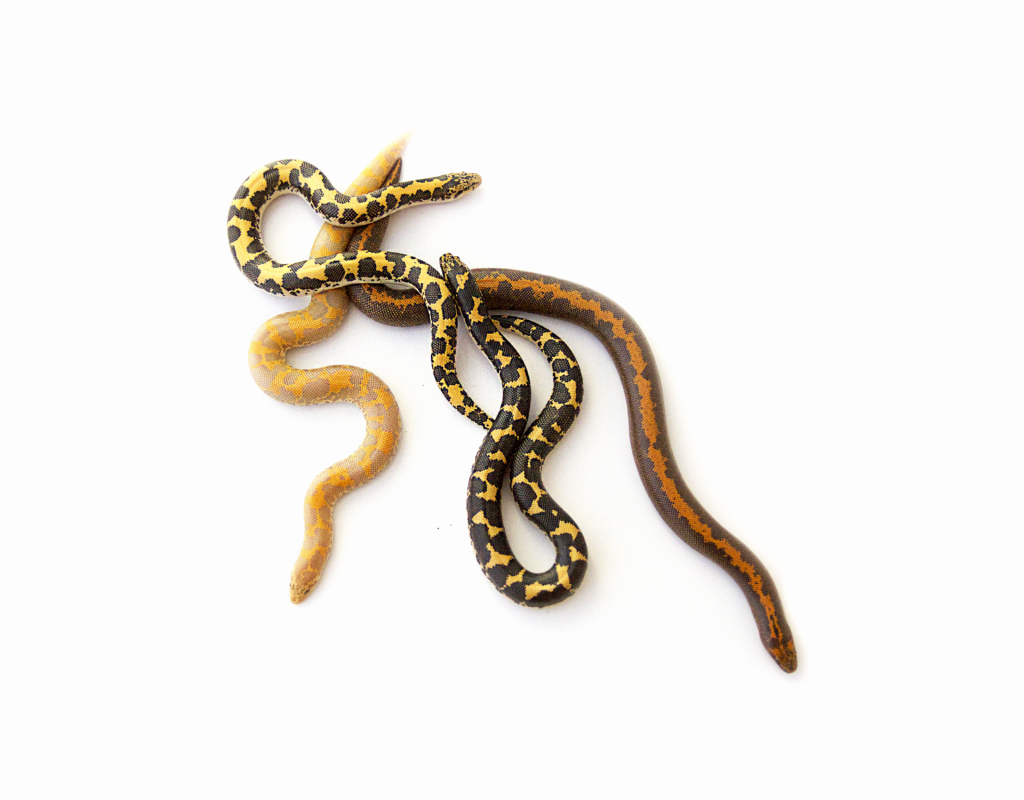The Backwater Reptiles staff are all huge fans of Kenyan Sand Boas (Eryx c. loveridgei) mainly because these snakes are so even-tempered, moderately-sized, and low maintenance. They are considered great additions for Beginner Reptile Keepers.
Hobbyists have produced many interesting color varieties and morphs of Kenyan sand boas, similar to how many morphs of other popular snakes like reticulated pythons, corn snakes, and king snakes have been bred. This is why keeping Kenyan sand boas is a lot like eating potato chips – you can’t have just one! We bet you’ll end up with a breeding pair and beautiful offspring. It’s a good idea to know the gender of the snake you are receiving as Kenyan sand boas can be housed communally male-female and female-female, but it’s not advised to keep multiple males in a single cage.
When you receive your first Kenyan sand boa, you’ll want to make sure its enclosure is set up properly and that it receives everything it needs to stay healthy and live out its 20+ year lifespan. Please know that this particular species is known to grow relatively slower compared to other Boa species.
The Kenyan Sand Boa can live in a ten-galloon enclosure for quite a few years of its life however as they mature into adults, a twenty-galloon is recommended (they don’t tend to grow larger than 20 inches in length). A heating pad on the bottom of the tank is a good idea as these boas burrow. The hot side of their enclosure should be around 95 degrees during the day with the cool side staying around 80 degrees. This can generally be achieved by using an incandescent bulb set up. Temperatures dropping to the 70 degree range is acceptable at night time.

Albino Morph
Because Kenyan sand boas are known for burrowing, they will require a substrate that supports this habit, whether that be Care Fresh, newspaper shavings, or aspen snake bedding. Some keepers/breeders keep their Kenyan Sand Boa’s on sand (as their name says) however there is always a higher risk of accidental impaction. Minimal cage decor is necessary as these boas spend a lot of time hiding in their substrate. No heavy items are advised to be kept in the tank as the snakes can accidentally injure themselves by burrowing underneath.

Striped Morph
Feeding a Kenyan sand boa is pretty straight forward. They strongly prefer pinkie mice and will generally constrict their prey even if it is offered to them already dead (i.e. frozen/thawed mice). As with most snakes, it’s a good idea to transfer your sand boa to a separate enclosure for feeding as it ensures communally housed snakes don’t battle one another for food. It also encourages your snake to not strike when being taken out of the cage because it trains it to recognize feeding occurs in a separate location.

We hope you found this information on Kenyan sand boas helpful. If you’re interested in acquiring one of these beautiful snakes, we offer Kenyan sand boas for sale.
